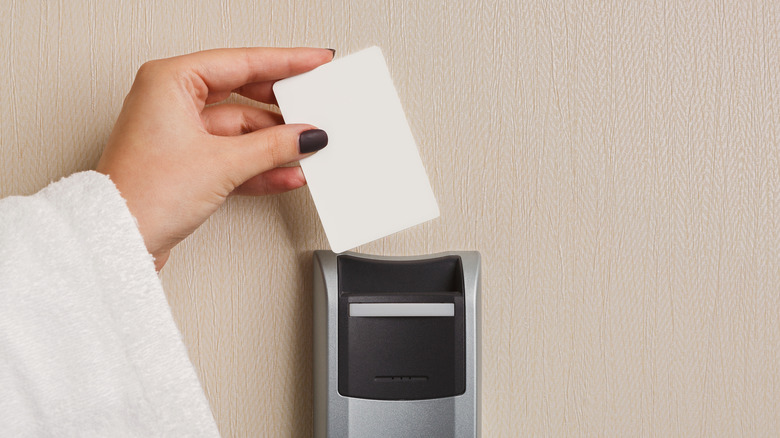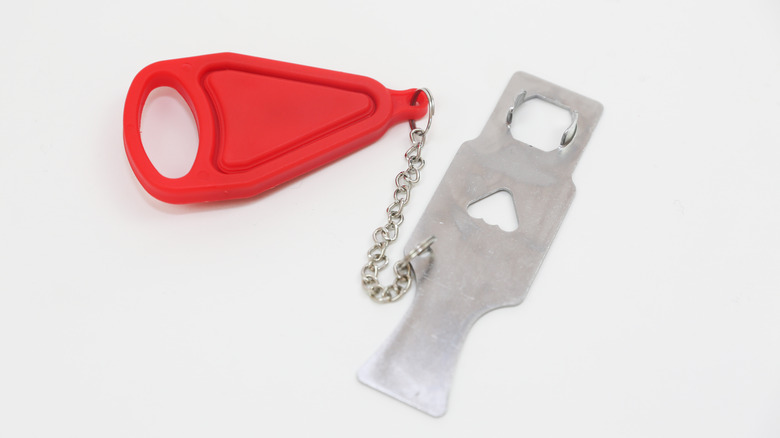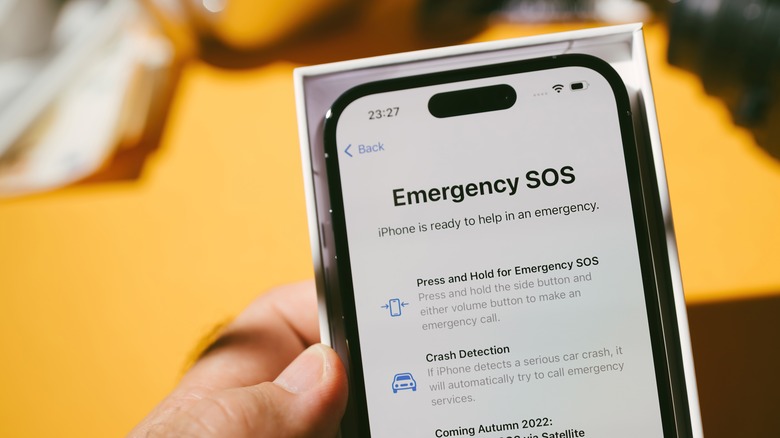Simple Ways To Add Extra Security To Your Hotel Room
Traveling alone can be a wonderful experience. You get to see new places at your own pace, take pictures at your leisure, go anywhere you want without protest, and never have to share your meals! But when it comes to safety, solo travel can put you at a bit of a disadvantage. It's true that when you travel alone, you are at a greater risk of being taken advantage of, and you may be far from home and far from help should you need it.
However, this is not to say you shouldn't solo travel. There are plenty of easy ways you can protect yourself when out and about — stay aware of your surroundings, never carry your most important documents with you, always keep spare cash in a money belt or in the hotel safe, and read up about common scams. But safety concerns when traveling don't just stop there, you should also take steps to secure your hotel room so you can sleep soundly and without worry.
Basic tools to keep you safe in your room
A doorstop is one of the easiest tools used to secure a hotel room. It's safe to transport, lightweight, and easy to implement; simply place the wedge under the door of your room and test it to make sure it works by trying to open the door. If it works, it will be near impossible for someone to open the door, though this will only work if the door swings inward into your room.
Another simple tool you can use is a portable door lock (pictured). Most of these types of safety locks include a rectangular metal plate and a plastic or metal wedge. The plate fits between the latch and the strike plate (the metal part on the door frame). You will then close the door and snap the wedge against a matching slot on the plate. This is another device that will only work for a door that swings inward.
If you're not as concerned about access to your hotel room door but there are windows easily accessed to your room, you may also want to consider a portable motion detector alarm. These devices can face a window (but also doors or other areas of your room) and will go off if they detect movement. These devices are great for preventing access to your room when you are inside, but there are other ways to keep yourself safe or quickly call for help if you're in trouble, too.
Other safety features to consider when you travel
The best safety devices on the market are the ones already in your pocket, always charged, and powered on — your cellphone. For iPhones, you will want to set up or update your medical ID and emergency contacts (which can be accessed by pressing and holding down the home and bottom volume button) and set up "Find My," which can share your location with trusted contacts. For Android devices, you can head to your settings, search for "safety and emergency," and set up Emergency SOS. Here you have an array of features to choose from, including how you can access Emergency SOS. If you're in your room and feel like you're in danger, this is the best way to let your contacts know you're in distress.
Personal safety alarms are also a good alternative if you cannot bring personal protection like pepper spray, which is illegal in most of Europe, for example. These small portable alarms make a loud noise and a blinding flashing light that can easily be activated in an emergency to distract attackers and let others around you know there's an emergency. You can also purchase small panic buttons disguised as jewelry and keychains that will discreetly notify emergency contacts if pressed.


